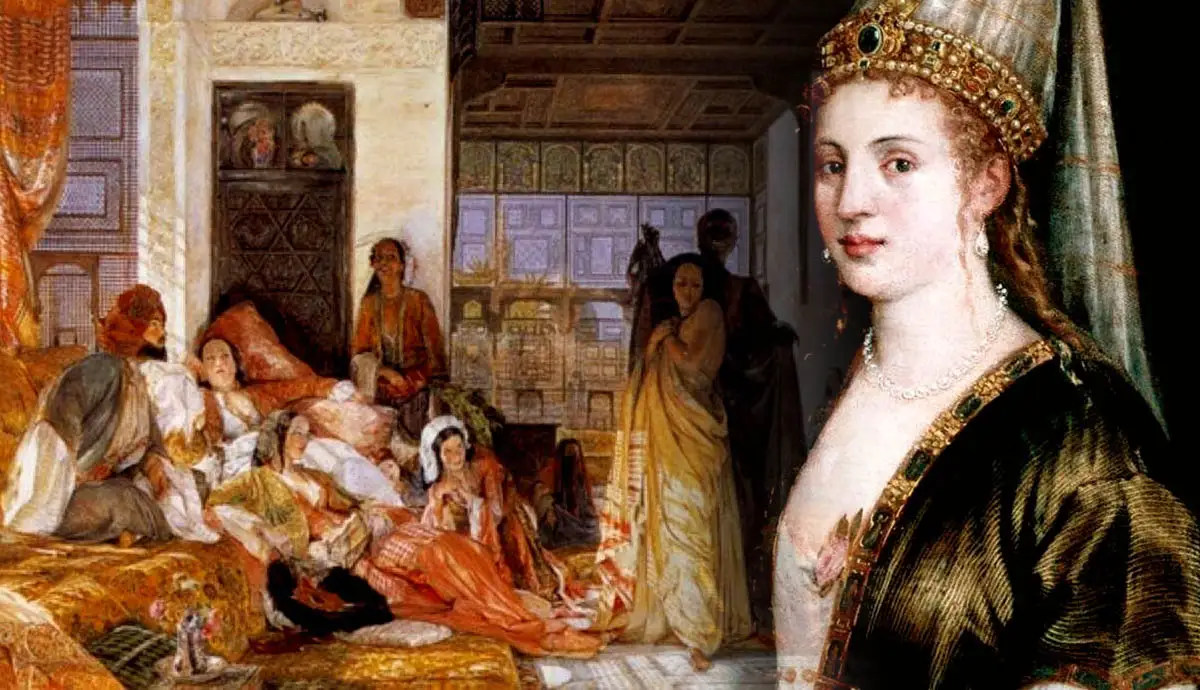Hareem al-Sultan, also known as Hürrem Sultan, is a name that echoes through the corridors of Ottoman history, representing both remarkable influence and complex intrigue. As the wife of Sultan Suleiman the Magnificent, Hareem al-Sultan’s life and legacy are woven into the fabric of Ottoman grandeur. Her story is not just one of power and politics but also of personal triumph and transformation, making her a captivating figure in history.
The Rise of Hareem al-Sultan
Born Roxelana in the early 16th century in what is now Ukraine, Hareem al-Sultan’s early life was far removed from the opulent courts of the Ottoman Empire. Captured by slave traders, she was sold into the Ottoman harem, where her journey from a captive to a queen began. Her intelligence, charm, and beauty quickly won her the favor of Sultan Suleiman, leading to her rise from a mere concubine to his legal wife.
Her transformation from Roxelana to Hareem al-Sultan marked a significant departure from the norms of the Ottoman court, where sultans typically did not marry their concubines. Her marriage to Suleiman was a powerful political statement, signifying a shift in the empire’s practices and setting the stage for her profound influence.
Political and Social Influence
Hareem al-Sultan’s impact extended far beyond her role as Suleiman’s wife. She became a formidable political figure, wielding considerable influence in the empire’s governance. Her ascent to power was characterized by her involvement in state affairs, including diplomatic missions and domestic policies.
One of her notable achievements was her role in fostering alliances and strengthening the empire’s foreign relations. Hareem al-Sultan played a key role in negotiating treaties and maintaining diplomatic ties with European powers, contributing to the empire’s political stability and expansion.
Domestically, Hareem al-Sultan was instrumental in the promotion of charitable works. She founded several institutions, including mosques, schools, and hospitals, which reflected her commitment to philanthropy and social welfare. Her contributions to the empire’s social infrastructure left a lasting legacy, showcasing her dedication to the well-being of her subjects.
Cultural and Architectural Contributions
Hareem al-Sultan’s influence is also evident in the cultural and architectural advancements during her time. She was a patron of the arts and played a significant role in the development of Ottoman art and architecture. Her support extended to the commissioning of various works, including intricate jewelry, textiles, and architectural projects.
One of the most significant architectural contributions attributed to Hareem al-Sultan is the construction of the Haseki Sultan Mosque in Istanbul. This mosque, named in her honor, is a testament to her patronage and reflects her vision of blending elegance with functionality. The mosque’s design, with its elegant domes and minarets, is a prime example of Ottoman architectural sophistication.
The Complex Legacy of Hareem al-Sultan
Hareem al-Sultan’s legacy is a complex one, marked by both admiration and controversy. Her rise to power and influence was unprecedented for a woman in the Ottoman court, and she remains a symbol of female empowerment in a historical context where women’s roles were often limited. However, her life was not without its challenges and criticisms.
Her political maneuvering, including the alleged manipulation of court politics and rivalries, has been a subject of historical debate. The intrigue surrounding her life, including rumors of her involvement in the elimination of political rivals, adds layers of complexity to her legacy.
Moreover, her role in the succession struggle for her son, Selim II, who eventually succeeded Suleiman, highlights the often perilous intersection of personal ambitions and political power within the Ottoman court.
Conclusion
Hareem al-Sultan’s story is a fascinating chapter in the history of the Ottoman Empire. Her rise from humble beginnings to becoming one of the most influential women of her time is a testament to her intelligence, ambition, and resilience. Her contributions to politics, culture, and architecture have left an indelible mark on Ottoman history, making her a figure of enduring interest and significance. Her legacy continues to be explored and celebrated, offering insights into the complexities of power, gender, and influence in one of history’s most storied empires.
